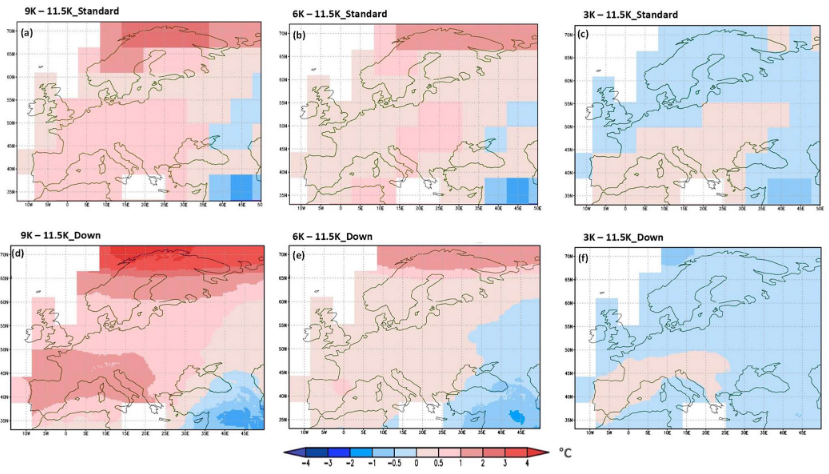Simulations of the Holocene climate in Europe using an interactive downscaling within the iLOVECLIM model (version 1.1)
Written by Pepijn Bakker no comments
Frank Arthur and co-authors use the iLOVECLIM model including interactive downscaling. They perform a transient simulation covering the Holocene and focus on model-data comparison for the Scandes mountains, the Alps, the Scottish Highlands, and the Mediterranean. This study presents the application of an interactive downscaling in Europe using iLOVECLIM (a model of intermediate complexity), increasing its atmospheric resolution from 5.56 to 0.25° kilometric. A transient simulation using the appropriate climate forcings for the entire Holocene (11.5–0 ka BP) was done for both the standard version of the model and with an interactive downscaling applied. Our results show that simulations from downscaling present spatial variability that agrees better with proxy-based reconstructions and other climate models as compared to the standard model. The downscaling scheme simulates much higher (by at least a factor of 2) precipitation maxima and provides detailed information in mountainous regions. We focus on examples from the Scandes mountains, the Alps, the Scottish Highlands, and the Mediterranean. The higher spatial resolution of the downscaling provides a more realistic overview of the topography and gives local climate information, such as precipitation and temperature gradient, that is important for paleoclimate studies. With downscaling, we simulate similar trends and spatial patterns of the precipitation changes reconstructed by other proxy studies (for example in the Alps) as compared to the standard version. Our downscaling tool is numerically cheap, implying that our model can perform kilometric, multi-millennial simulations and is suitable for future studies.
Photo: Simulated mean annual temperature anomalies for the model with and without downscaling. Figure 3 in publication
Link to publication: Arthur et al. 2022
Written by: Pepijn Bakker
Classified in : Uncategorized Tags : CLIO, ECBilt, VECODE